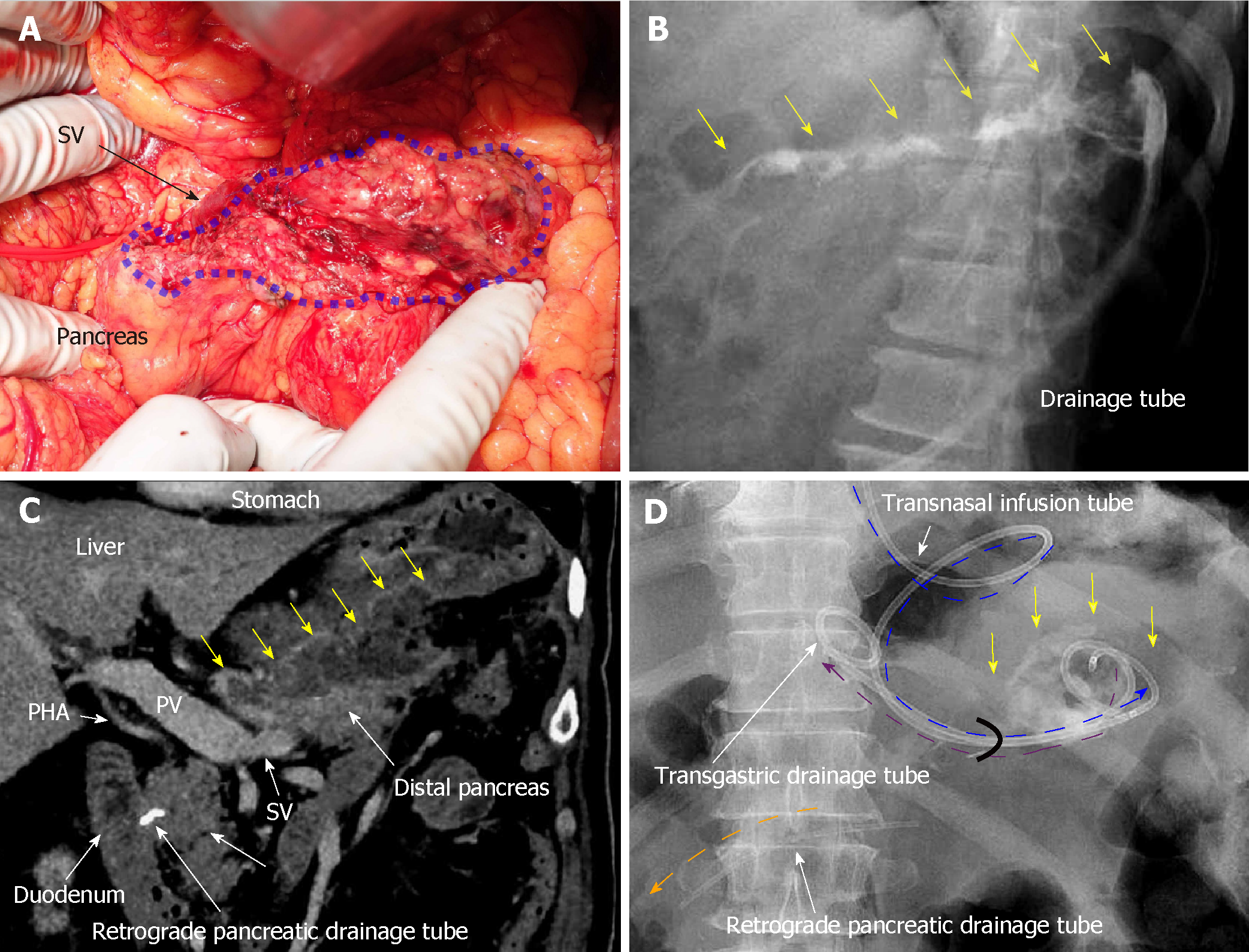Copyright
©The Author(s) 2019.
World J Clin Cases. Sep 6, 2019; 7(17): 2526-2535
Published online Sep 6, 2019. doi: 10.12998/wjcc.v7.i17.2526
Published online Sep 6, 2019. doi: 10.12998/wjcc.v7.i17.2526
Figure 5 Case 3.
A: Pancreatic parenchyma was preserved with the splenic vein, although the pancreatic parenchyma was widely exposed secondary to the aneurysmectomy (blue area); B: Optimal tube drainage (i.e., intentional placement along the distal pancreas) could not be established because of difficulty using a percutaneous approach, and intractable pancreatic fistula along the distal pancreas (yellow arrows) was seen during fistulography on postoperative day (POD) 13; C: Intractable pancreatic fistula resulted in an abscess and localized peritonitis secondary to bacterial infection, and contrast computed tomography on POD 59 revealed an intraperitoneal abscess along the distal pancreas (yellow arrows); D: A retrograde pancreatic drainage tube (orange arrow) was placed endoscopically on POD 15. On POD 63, continuous local lavage (CLL) of the abscess cavity (yellow arrow) was initiated endoscopically via the transgastric route. Transnasal infusion was initiated and transgastric drainage tubes (purple and blue arrows) were placed endoscopically. From POD 63, saline irrigation was continuously injected via the transnasal infusion tube, and amylase levels in the lavaged fluid began to decrease immediately. Fistulography on POD 70 revealed resolution of the abscess after 1 wk of CLL. CLL: Continuous local lavage; PHA: Proper hepatic artery; POD: Postoperative day; PV: Portal vein; SV: Splenic vein.
- Citation: Hori T, Ogawa K, Yamamoto H, Harada H, Matsumura K, Yamamoto M, Yamada M, Yazawa T, Kuriyama K, Tani M, Yasukawa D, Kamada Y, Aisu Y, Tani R, Aoyama R, Nakayama S, Sasaki Y, Nishimoto K, Zaima M. Impact of continuous local lavage on pancreatic juice-related postoperative complications: Three case reports. World J Clin Cases 2019; 7(17): 2526-2535
- URL: https://www.wjgnet.com/2307-8960/full/v7/i17/2526.htm
- DOI: https://dx.doi.org/10.12998/wjcc.v7.i17.2526









